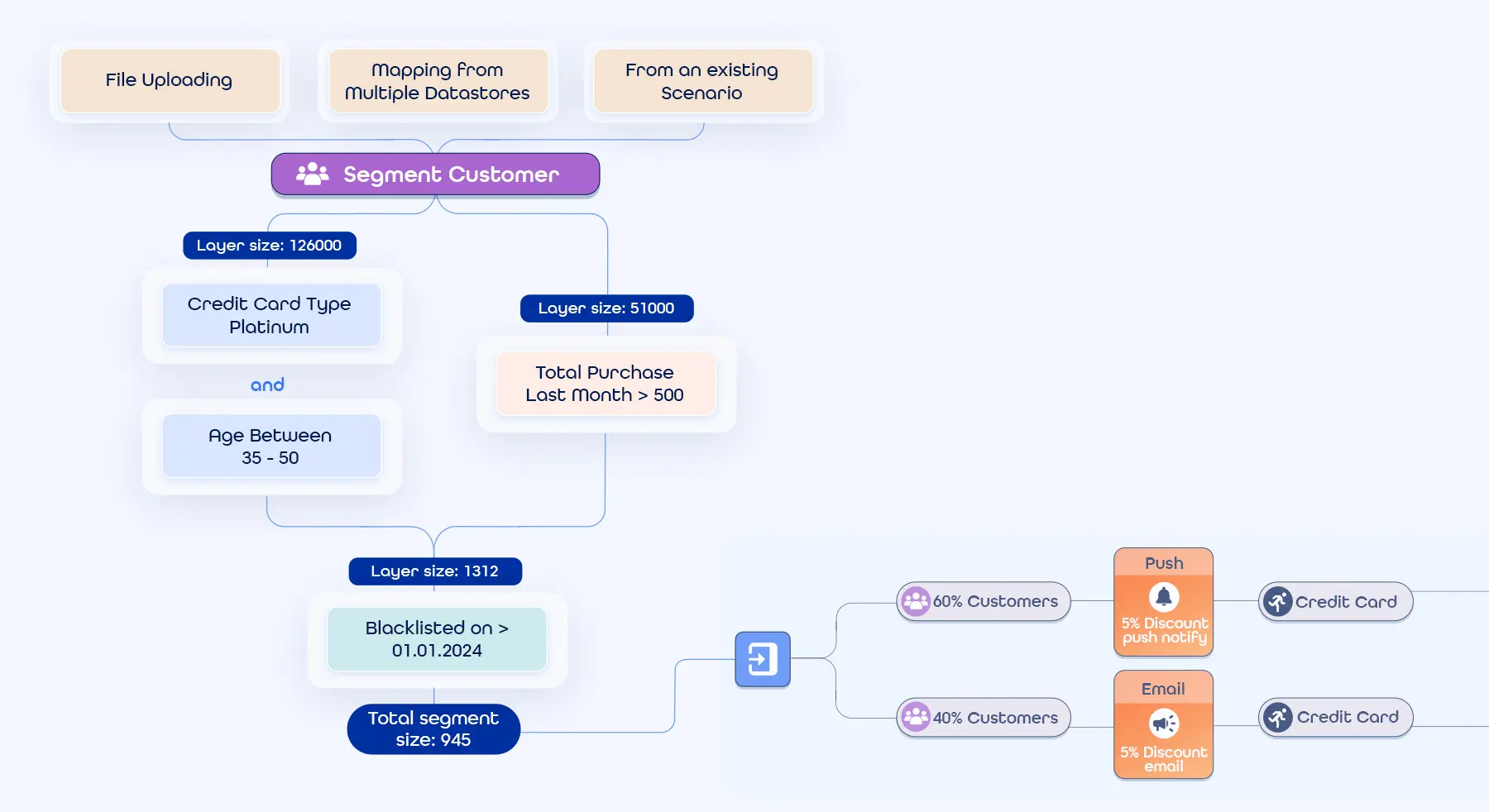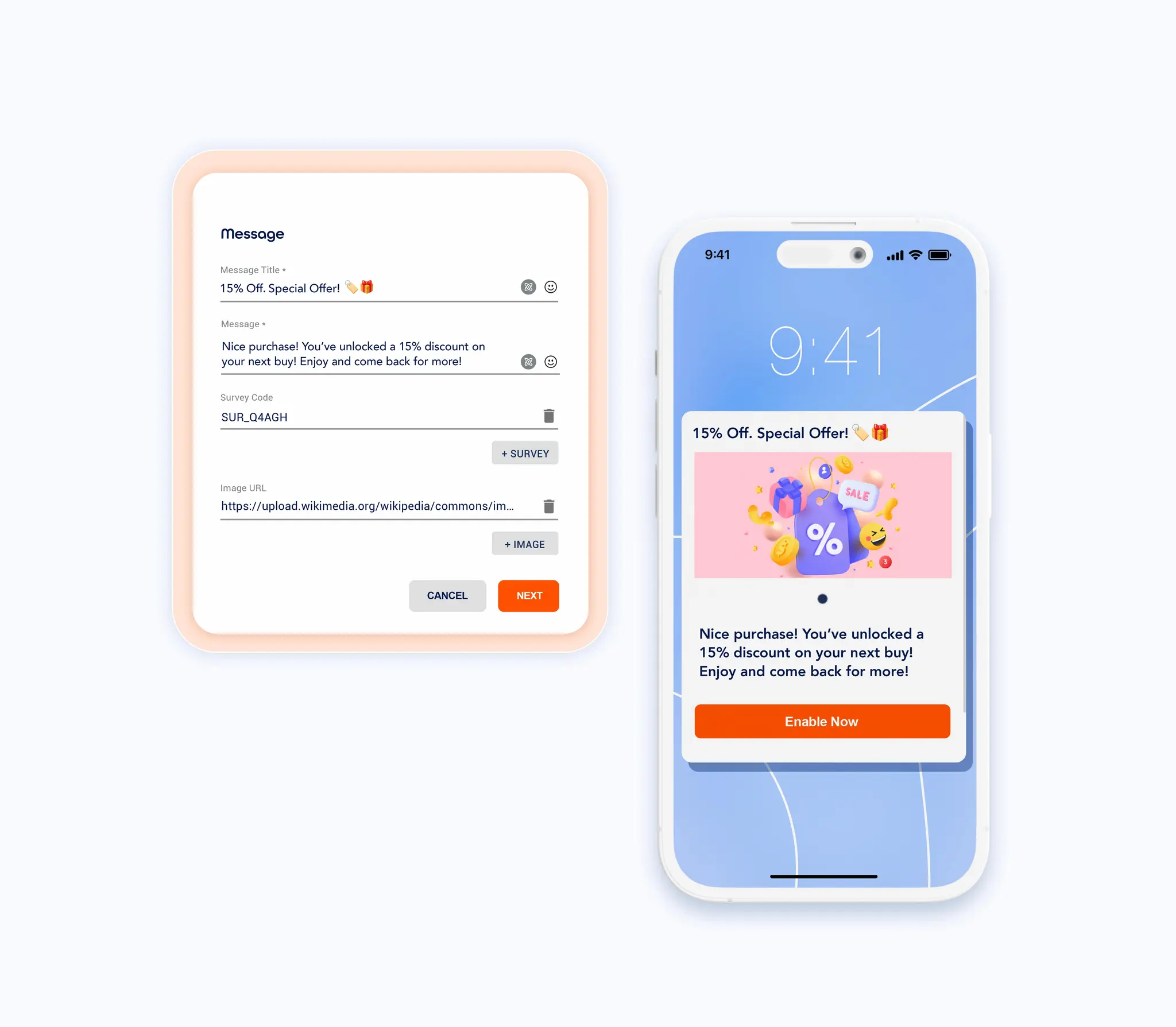A/B Testing
A/B testing, also known as split testing, is a method used to compare two versions of a digital customer experience to determine which one performs better.
In a typical A/B test, the audience is randomly split into two groups. One group sees Version A, and the other sees Version B. The performance of each version is measured based on a key metric, such as click-through rate, conversion rate, or engagement.

Why Does A/B Testing Matter?
Marketers often use A/B testing to experiment with things like subject lines in emails, CTA button text on landing pages, or even the layout of a product page. By making small, measurable changes and testing them in controlled conditions, teams can move away from guesswork and start making decisions backed by actual customer behavior.
Here are some of the key benefits A/B testing provides businesses:
1. Better Customer Insights
Each test reveals patterns in user behavior, helping businesses understand what motivates clicks, sign-ups, or purchases and make data-driven decisions. A/B tests can also uncover surprising preferences or friction points, deepening businesses’ knowledge of user needs and expectations.
2. Increased Personalization Opportunities
Knowing what resonates with different segments allows businesses to tailor experiences at scale, boosting relevance and response.
3. Improved Campaign Performance
Whether it’s an email subject line, a homepage hero image, or a checkout flow, small changes can lead to meaningful lifts in engagement and conversions.
4. Enhanced Marketing ROI
By allocating resources on what performs best, businesses ensure their team’s time and budget are going toward the highest-impact content or experiences.
5. Reduced Bounce Rate
By testing variations of page content, layout, or messaging, brands can keep visitors engaged longer and guide them toward conversion paths more effectively.
6. Minimized Risk Before Big Rollouts
Testing on a smaller audience helps businesses avoid costly mistakes by identifying what doesn’t work before scaling it to everyone.
7. Optimized SEO
By SEO A/B testing different headlines, meta descriptions, or on-page content variations, businesses can identify which changes improve click-through rates and search rankings, driving more organic traffic to their website.
Best Practices and Pitfalls to Avoid
Getting value from A/B testing isn’t just about running experiments; it’s about running them well. Here are some key elements businesses should consider testing, along with common mistakes to watch out for:
Best Practices:
Campaign Titles: A/B testing social media captions, variations of push notification titles, email subject lines, website titles, and other campaign messaging can help identify which messages resonate best.
CTAs: Testing variations of call-to-action buttons, links, and prompts can help optimize conversion rates by identifying which CTAs are most compelling and persuasive to users.
Creatives: Testing different images, videos, graphics, and visual elements can provide valuable insights into which creative assets perform best in capturing audience attention and conveying key messages effectively.
Placement of Elements: Testing the placement and layout of sticky bars, banners, in-app messages, and other interactive elements can help optimize visibility and usability, leading to better overall user experience and engagement.
Content: Testing variations of content, including headlines, body copy, product descriptions, and value propositions can help identify which messaging resonates most strongly with the target audience.
Design Elements: Testing different design elements such as color schemes, font styles, and overall aesthetics can help optimize visual appeal and brand perception, leading to higher engagement and conversions.
Audience Segmentation: Testing variations of campaigns targeted at different audience segments can help tailor messaging and offers to maximize relevance and effectiveness.
Pitfalls to Avoid
Ending Tests Too Soon: A short test period can lead to misleading results. Give experiments enough time to reach reliable conclusions.
Overcomplicating the Test: Testing too many variables at once without a large sample size can muddy the results.
Ignoring “Losing” Variants: There’s often as much to learn from what didn’t work. Document failures and revisit them as they may inform future ideas.
How Real-Time Martech Enhances A/B Testing
Traditional A/B testing platforms gives businesses valuable insights, but real-time martech takes it to the next level. By combining testing with live data streams and dynamic content delivery, businesses can respond to customer behavior as it happens, not days or weeks later.
Here’s what that looks like in practice:
1. Instant Feedback Loops
Real-time data lets businesses monitor test performance as soon as it begins, so teams can identify winning variants and adjust quickly.
2. Dynamic Experience Delivery
Businesses can automatically serve the best-performing version of a page, message, or CTA in real time.
3. Omnichannel Experimentation
Marketing teams can run coordinated A/B testing for mobile apps, web, email, social media, and more channels, all powered by a centralized decisioning engine that adapts in the moment.
4. Smarter Segmentation and Personalization
Businesses are empowered to combine A/B test results with real-time behavioral signals to personalize experiences at scale, improving relevance and results.
5.Faster Time to Value
Real-time capabilities help teams learn, iterate, and optimize campaigns faster, shortening the gap between insight and action.

evamX: Unlocking the Potential of A/B Testing
By integrating A/B testing into a real-time martech stack, you don’t just test, you learn and adapt continuously, creating a more agile and effective marketing engine.
With evamX, launch experiments across channels, respond to user behavior in real time, and automatically deliver the top-performing experience to every audience segment - no waiting, no guesswork.
A/B testing is one of the most powerful tools in a marketer’s toolbox, but its real potential is unlocked when paired with real-time data and dynamic decisioning. Start optimizing with confidence.
Request a demo or contact us about how our platform helps marketing teams test, learn, and grow faster.
Join the Evam Community
Subscribe to receive the latest insights, news, and updates straight to your inbox.


